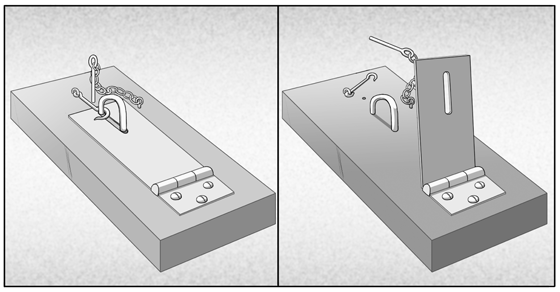Motivation is not an absolute science. Management practices depend on several studies, some of them older than we realize, and therefore, quite out of sync with reality.
Like incentives. It’s hard to imagine that this management practice dates back to the ’40s and ’50s and was based on B.F Skinner’s reinforcement theory. Essentially this is a carrot-stick or reward-punishment approach to management. The motivation is extrinsic following the assumption that humans are fundamentally inert, motivated to action only to gain a reward, like money, or avoid a punishment.
And so, employee performance and excellence were thought to be fueled by rewarding the good and punishing the bad.
This command-control model of organization, common to the industrial age, became and remained the standard modus operandi of the school of scientific management for the better half of the 20th century.
The missing “drive”
But in 1949 Harry F. Harlow professor of Psychology at the University at Wisconsin stumbled upon something quite extraordinary.
Harlow and his colleagues were conducting an experiment to study learning in primates. The experimenters placed a mechanical puzzle inside the monkeys’ cages to see their reaction and test them for problem-solving later. Surprisingly, the monkeys started playing with the puzzle on their own, with focus and determination, seeming to enjoy it. In fact, the monkeys not only started solving the puzzle, but they also began mastering it. At the end of the two weeks, some were actually solving it in 60 seconds.
Until then, scientists knew of only two main behavior drives – the internal biological drives (hunger, thirst etc.) and learned behaviors, driven by rewards and punishments from external environments. But here the monkeys enjoyed solving the puzzle even though it did not feed any biological need. Furthermore, when scientists introduced rewards (raisins) into the experiment, the monkeys made more mistakes and began to lose interest in the puzzle.
Harlow began to wonder if there was a third drive that psychologists had missed and if, perhaps, it was as strong as any of the other drives.
He noted that it seemed like, “the performance of the task provided an intrinsic reward.”
Intrinsic motivation
Two decades later, inspired by Harlow, Edward Deci, a graduate student of psychology with an MBA, ran his own experiment with a Soma puzzle and three groups of students.
Deci concluded that people, “have an inherent tendency to seek out novelty and challenges, to extend and exercise their capacities, to explore and to learn. But this drive needed the right environment to survive.”
Deci warned that such a drive did not thrive in an “externally controlled system such as monetary rewards.”
In 1975, Deci published Intrinsic Motivation. Following this, Deci and student Richard Ryan fashioned what came to be known as the ‘‘self-determination theory’.
It identified that people have three innate psychological needs: a need for competence, autonomy and relatedness.
Post-world-war studies have shown ‘a sense of autonomy’ has a powerful effect on performance, promoting “higher productivity and less burnout”.
Impact of autonomy on corporate cultures
A 2004 study at an American investment bank found greater job satisfaction among employees whose bosses offered “autonomy support”. “These bosses saw issues from the employee’s point of view, gave meaningful feedback and information, provided ample choice about what to do and how to do it, and encouraged employees to take on new projects”. Autonomy-supporting bosses promoted self-motivation, satisfaction, and performance. This boosted the performance of the teams and the organization at large.
Cornell University’s recent study of 320 small businesses revealed that companies in which employees were given autonomy grew four times faster than traditionally managed companies.
In addition to driving successful outcomes, autonomy removes learned helplessness. It rekindles that child-like curiosity and the need for mastery that each of us possesses.
This natural tendency is turned off by the command-and-control type work cultures.
But autonomy sparks intrinsic motivations, builds confidence as well as resourcefulness of the organization’s people.
Building a culture where autonomy thrives
It’s surprising that the science supporting autonomy and self-management has been available to us since the 70s. Yet management practices continue to lag behind.
A step in the right direction is to build a culture that relies on science and data rather than instincts. Furthermore, fostering a culture that structures incentives using behavior science can lead to incentives that actually work.
Companies like Google and 3M give their employees time during work to focus on projects they are passionate about. Meddius’ CEO Jeff Gunther successfully implemented a ROWE (Results Only Work Environment) workplace where employees don’t have a schedule, only results that they have to show – giving them the freedom to decide how, when, and where they get their work done.
In today’s WFH environment, we’ve seen teams do even better working remotely than before when they have the tools to stay engaged, self-sufficient, and connected to their supervisors. While behavior-led technology can build better work habits, it’s only management that can redefine the organization’s culture. As Jeff Gunther puts it, “Management is not about walking around and ensuring people are in their offices”. It’s about creating the right conditions for people to do their best work.
Title Image Credits: Andreas Klassen on Unsplash





